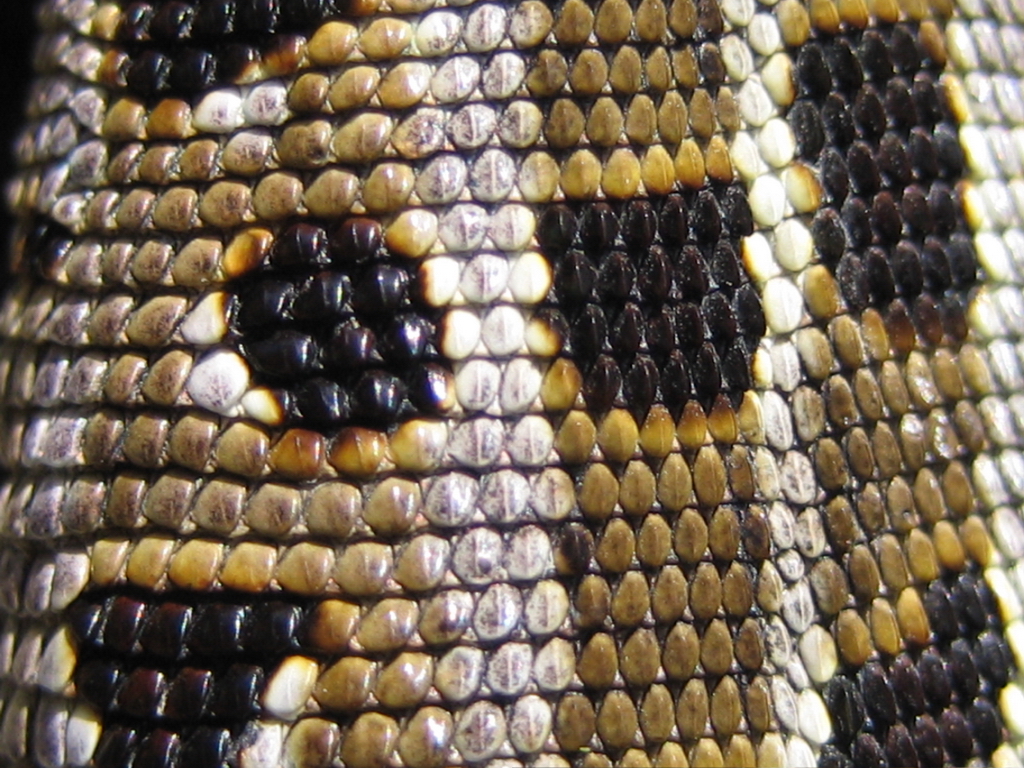|
Plica (lizard)
''Plica'' is a genus of tropidurid lizards found in South America and the Caribbean. Species in the genus ''Plica'' are arboreal, medium-sized lizards. Taxonomy For a long time, the genus ''Plica'' was considered to include four species: two relatively widespread ones ( ''P. plica'' and ''P. umbra'') and two tepuis-associated species with narrow distributions ( ''P. lumaria'' and ''P. pansticta''). However, recent research has shown that ''P. plica'' is a cryptic species complex, and four new species were described in 2013. The species count will likely increase as there are still several undescribed species. Species The currently recognized species are the following:. * ''Plica lumaria'' * '' Plica pansticta'' * ''Plica plica'' – collared tree runner, tree runner * ''Plica umbra'' – blue-lipped tree lizard, harlequin racerunner Formerly included in ''Plica plica'': * '' Plica caribeana'' – Caribbean treerunner * ''Plica kathleenae'' – Kathleen’s treerunner ... [...More Info...] [...Related Items...] OR: [Wikipedia] [Google] [Baidu] |
John Edward Gray
John Edward Gray, Fellow of the Royal Society, FRS (12 February 1800 – 7 March 1875) was a British zoology, zoologist. He was the elder brother of zoologist George Robert Gray and son of the pharmacologist and botanist Samuel Frederick Gray (1766–1828). The same is used for a zoological name. Gray was Keeper of Zoology, keeper of zoology at the British Museum in London from 1840 until Christmas 1874, before the natural history holdings were split off to the Natural History Museum, London, Natural History Museum. He published several catalogues of the museum collections that included comprehensive discussions of animal groups and descriptions of new species. He improved the Zoological specimens, zoological collections to make them amongst the best in the world. Biography Gray was born in Walsall, but his family soon moved to London, where Gray studied medicine. He assisted his father in writing ''The Natural Arrangement of British Plants'' (1821). After being Blackballing, ... [...More Info...] [...Related Items...] OR: [Wikipedia] [Google] [Baidu] |
Carl Linnaeus
Carl Linnaeus (; 23 May 1707 – 10 January 1778), also known after his ennoblement in 1761 as Carl von Linné Blunt (2004), p. 171. (), was a Swedish botanist, zoologist, taxonomist, and physician who formalised binomial nomenclature, the modern system of naming organisms. He is known as the "father of modern taxonomy". Many of his writings were in Latin; his name is rendered in Latin as and, after his 1761 ennoblement, as . Linnaeus was born in Råshult, the countryside of Småland, in southern Sweden. He received most of his higher education at Uppsala University and began giving lectures in botany there in 1730. He lived abroad between 1735 and 1738, where he studied and also published the first edition of his ' in the Netherlands. He then returned to Sweden where he became professor of medicine and botany at Uppsala. In the 1740s, he was sent on several journeys through Sweden to find and classify plants and animals. In the 1750s and 1760s, he continued to coll ... [...More Info...] [...Related Items...] OR: [Wikipedia] [Google] [Baidu] |
Reptiles Of The Caribbean
Reptiles, as most commonly defined are the animals in the Class (biology), class Reptilia ( ), a paraphyletic grouping comprising all sauropsid, sauropsids except birds. Living reptiles comprise turtles, crocodilians, Squamata, squamates (lizards and snakes) and rhynchocephalians (tuatara). As of March 2022, the Reptile Database includes about 11,700 species. In the traditional Linnaean taxonomy, Linnaean classification system, birds are considered a separate class to reptiles. However, crocodilians are more closely related to birds than they are to other living reptiles, and so modern Cladistics, cladistic classification systems include birds within Reptilia, redefining the term as a clade. Other cladistic definitions abandon the term reptile altogether in favor of the clade Sauropsida, which refers to all amniotes more closely related to modern reptiles than to mammals. The study of the traditional reptile Order (biology), orders, historically combined with that of modern amphi ... [...More Info...] [...Related Items...] OR: [Wikipedia] [Google] [Baidu] |
Lizards Of South America
Lizards are a widespread group of squamate reptiles, with over 7,000 species, ranging across all continents except Antarctica, as well as most oceanic island chains. The group is paraphyletic since it excludes the snakes and Amphisbaenia although some lizards are more closely related to these two excluded groups than they are to other lizards. Lizards range in size from chameleons and geckos a few centimeters long to the 3-meter-long Komodo dragon. Most lizards are quadrupedal, running with a strong side-to-side motion. Some lineages (known as " legless lizards"), have secondarily lost their legs, and have long snake-like bodies. Some such as the forest-dwelling '' Draco'' lizards are able to glide. They are often territorial, the males fighting off other males and signalling, often with bright colours, to attract mates and to intimidate rivals. Lizards are mainly carnivorous, often being sit-and-wait predators; many smaller species eat insects, while the Komodo eats mamm ... [...More Info...] [...Related Items...] OR: [Wikipedia] [Google] [Baidu] |
Plica
Plica may refer to: * ''Plica'' (lizard), a genus of lizards * '' Capillaria plica'', a parasitic nematode * Plica (sigillography) - term from sigillography * A fold or crease, especially of skin or other tissue, from medieval Latin plicare ("to fold") **''Plica fimbriata'': Fimbriated fold of tongue ** Plica semilunaris of the conjunctiva ** Plica semilunaris of the fauces The plica semilunaris is the thin upper part of the fold of mucous membrane A mucous membrane or mucosa is a membrane that lines various cavities in the body of an organism and covers the surface of internal organs. It consists of one or more l ... ** Plica syndrome of the knee ** ''Plica circularis'', also called circular fold, of the small intestine * The hair disease ''Plica polonica'': Polish plait * In early music notation, a note indicated in a ligature {{disambig ... [...More Info...] [...Related Items...] OR: [Wikipedia] [Google] [Baidu] |
Binomial Nomenclature
In taxonomy, binomial nomenclature ("two-term naming system"), also called nomenclature ("two-name naming system") or binary nomenclature, is a formal system of naming species of living things by giving each a name composed of two parts, both of which use Latin grammatical forms, although they can be based on words from other languages. Such a name is called a binomial name (which may be shortened to just "binomial"), a binomen, name or a scientific name; more informally it is also historically called a Latin name. The first part of the name – the '' generic name'' – identifies the genus to which the species belongs, whereas the second part – the specific name or specific epithet – distinguishes the species within the genus. For example, modern humans belong to the genus '' Homo'' and within this genus to the species '' Homo sapiens''. '' Tyrannosaurus rex'' is likely the most widely known binomial. The ''formal'' introduction of this system of naming species is ... [...More Info...] [...Related Items...] OR: [Wikipedia] [Google] [Baidu] |
Nota Bene
(, or ; plural form ) is a Latin phrase meaning "note well". It is often abbreviated as NB, n.b., or with the ligature and first appeared in English writing . In Modern English, it is used, particularly in legal papers, to draw the attention of the reader to a certain (side) aspect or detail of the subject being addressed. While ''NB'' is also often used in academic writing, ''note'' is a common substitute. The markings used to draw readers' attention in medieval manuscripts are also called marks. The common medieval markings do not, however, include the abbreviation ''NB''. The usual medieval equivalents are anagrams from the four letters in the word , the abbreviation DM from ("worth remembering"), or a symbol of a little hand (☞), called a manicule or index, with the index finger pointing towards the beginning of the significant passage.Raymond Clemens and Timothy Graham, Introduction to Manuscript Studies (Ithaca: Cornell University Press, 2007), p. 44. S ... [...More Info...] [...Related Items...] OR: [Wikipedia] [Google] [Baidu] |
Plica Rayi
''Plica rayi'', Ray's treerunner, is a species of South American lizard in the family Tropiduridae. The species is found in Colombia and Venezuela Venezuela (; ), officially the Bolivarian Republic of Venezuela ( es, link=no, República Bolivariana de Venezuela), is a country on the northern coast of South America, consisting of a continental landmass and many islands and islets in th .... www.reptile-database.org. References Plica Lizards of South America Reptiles of Colombia Reptiles of Venezuela Reptiles described in 2013 {{lizard-stub ... [...More Info...] [...Related Items...] OR: [Wikipedia] [Google] [Baidu] |
Plica Medemi
''Plica medemi'', Medem's treerunner, is a species of South American lizard in the family Tropiduridae The Tropiduridae are a family of iguanid lizards."Tropiduridae". The Reptile Database. www.reptile-database.org. The family is sometimes considered a subfamily, Tropidurinae. The subfamily is native to South America, including the islands of Tri .... The species is found in Colombia. www.reptile-database.org. References Plica Lizards of South America Reptiles of Colombia Reptiles described in 2013 {{lizard-stub ... [...More Info...] [...Related Items...] OR: [Wikipedia] [Google] [Baidu] |
Plica Kathleenae
''Plica kathleenae'', Kathleen's treerunner, is a species of South American lizard in the family Tropiduridae. The species is found in Guyana Guyana ( or ), officially the Cooperative Republic of Guyana, is a country on the northern mainland of South America. Guyana is an indigenous word which means "Land of Many Waters". The capital city is Georgetown. Guyana is bordered by the .... www.reptile-database.org. References Plica Lizards of South America Reptiles of Guyana Reptiles described in 2013 {{lizard-stub ... [...More Info...] [...Related Items...] OR: [Wikipedia] [Google] [Baidu] |
Michael J
Michael may refer to: People * Michael (given name), a given name * Michael (surname), including a list of people with the surname Michael Given name "Michael" * Michael (archangel), ''first'' of God's archangels in the Jewish, Christian and Islamic religions * Michael (bishop elect), English 13th-century Bishop of Hereford elect * Michael (Khoroshy) (1885–1977), cleric of the Ukrainian Orthodox Church of Canada * Michael Donnellan (1915–1985), Irish-born London fashion designer, often referred to simply as "Michael" * Michael (footballer, born 1982), Brazilian footballer * Michael (footballer, born 1983), Brazilian footballer * Michael (footballer, born 1993), Brazilian footballer * Michael (footballer, born February 1996), Brazilian footballer * Michael (footballer, born March 1996), Brazilian footballer * Michael (footballer, born 1999), Brazilian footballer Rulers =Byzantine emperors= * Michael I Rangabe (d. 844), married the daughter of Emperor Nikephor ... [...More Info...] [...Related Items...] OR: [Wikipedia] [Google] [Baidu] |
John C
John is a common English name and surname: * John (given name) * John (surname) John may also refer to: New Testament Works * Gospel of John, a title often shortened to John * First Epistle of John, often shortened to 1 John * Second Epistle of John, often shortened to 2 John * Third Epistle of John, often shortened to 3 John People * John the Baptist (died c. AD 30), regarded as a prophet and the forerunner of Jesus Christ * John the Apostle (lived c. AD 30), one of the twelve apostles of Jesus * John the Evangelist, assigned author of the Fourth Gospel, once identified with the Apostle * John of Patmos, also known as John the Divine or John the Revelator, the author of the Book of Revelation, once identified with the Apostle * John the Presbyter, a figure either identified with or distinguished from the Apostle, the Evangelist and John of Patmos Other people with the given name Religious figures * John, father of Andrew the Apostle and Saint Peter * ... [...More Info...] [...Related Items...] OR: [Wikipedia] [Google] [Baidu] |





